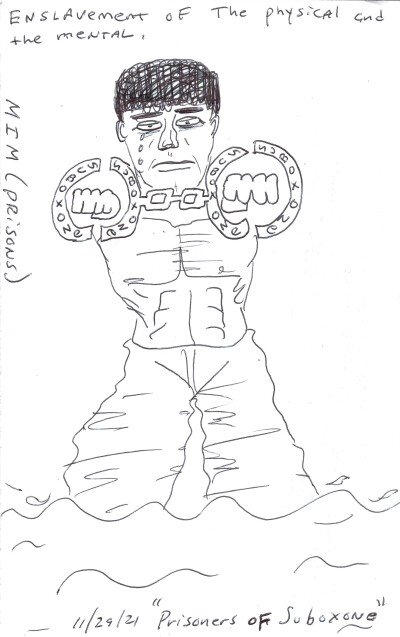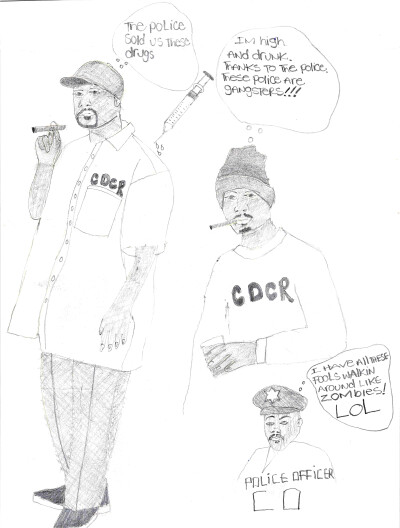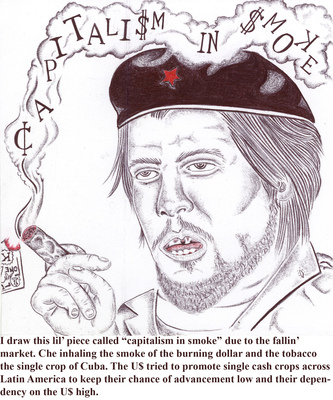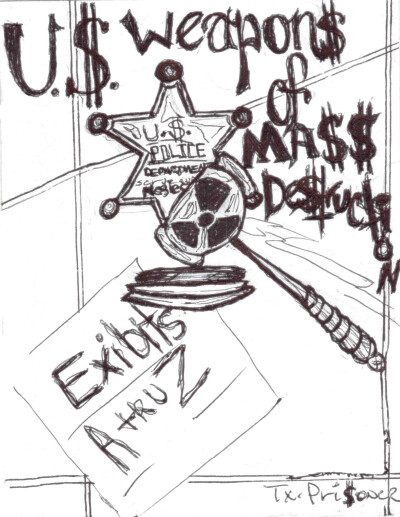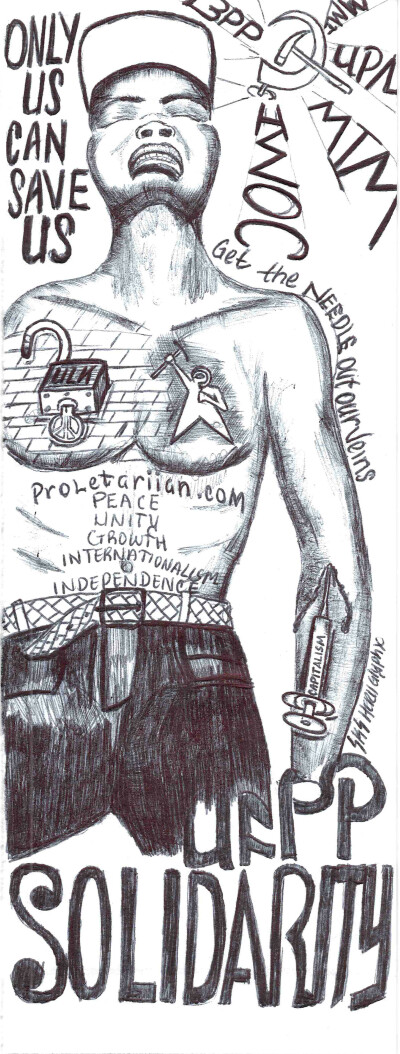
Providing What They Can't - Rehab for Releasees
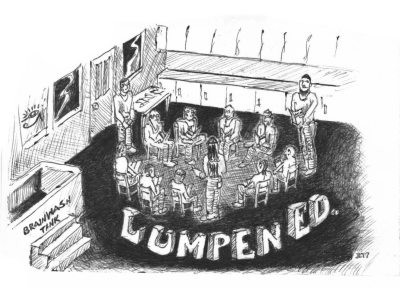
Shortly after receiving this issue of Under Lock & Key, a number of USW leaders and other supporters of our work will be receiving the first edition of our Revolutionary 12 Step Program. This has been in the works for over a year now and we are excited to get it into the hands of comrades who are ready to implement the program and provide feedback.
The Revolutionary 12 Step Program is a significant advance for our Serve the People “Re-Lease on Life” Program, which has been in existence in some form from the early years of MIM(Prisons)’s existence.
Who is it for?
When most of us think of the 12 steps, we think of Alcoholics Anonymous or a more general Narcotics Anonymous program. However, our program takes an approach similar to a program called Criminals & Gangmembers Anonymous to address the anti-people behavior of the lumpen class in a more general way.
Drugs and alcohol are a big part of the problems the people face. It is estimated that at least 65% of people incarcerated have a “Substance Use Disorder”, while the number goes up to 85% if you include all who were under the influence during the crime they were convicted of.(1) That’s a lot! As recent understandings of the brain tell us, the lack of impulse control that can lead to destructive behaviors is caused by unhealthy social conditions during childhood.(2) Drug abuse will often overlap with violence towards others and other behavior that is deemed criminal by the bourgeoisie and by the people as well. In the long-term, communism can eliminate the causes of these tendencies, but in the meantime we need to address all forms of anti-people behavior to transform ourselves from a lumpen state of being to a revolutionary proletarian one.
Some people in prison are innocent. Some broke a law in a conscious decision – sometimes even for righteous political reasons. But the vast majority of you reading this broke laws through actions you would have preferred to not have taken. The vast majority of people in prison could use this program to avoid regrettable actions in the future.
All of us have rehabilitation that we must go through because we were raised in a sick society. Ultimately, everyone born in this oppressive system could benefit from our Revolutionary 12 Step Program, but many of you need it if you ever want to stay out of prison.
Why do we need it?
The state, by definition, is run by the oppressors. In our imperialist conditions today the oppressors are the bourgeoisie, the imperialists, the oppressor nations – Euro-Amerika. The institutions of the state will always serve those interests. In the current system you have law enforcement, religious organizations, private prison companies like Geo Group, and more small-time profiteers running reentry programs for the state. None of these serve the interests of the oppressed.
Today, we don’t have the influence to abolish these imperialist institutions, but we do have the influence to build independent proletarian institutions. Not only that, this is part of our central task today as a movement, “create public opinion and the independent institutions of the oppressed to seize power.”(3) We discussed previous independent institutions of the oppressed in ULK 59 on drugs.(4) Since then we’ve been working on developing our own.
One of the lessons we can take from the practice of our Re-Lease on Life Program to date is the need to address the drive to do drugs, engage in dangerous sexual activities, and the temptation of the thrill of the life of crime. We must put in its place the thrill of revolution; of fighting the real enemy; of building something new.
Before MIM(Prisons) had a Re-Lease on Life Program, we had one comrade who was one of our top theoreticians and USW leaders while in the SHU. Ey was released from prison and quickly slipped into alcoholism again. Ey stayed in touch for the first year, and then we stopped hearing from em, and ey never did any political work on the outside. At that time MIM(Prisons) had little to offer this comrade to help em adapt to life on the outside, and we certainly had nothing like a 12 step program to help em with eir alcoholism.
A story that has become too common is USW members who are released and never write us for years. When we finally do hear back from them it’s because they ended up back in prison. One such comrade recently explained:
“something I felt lack of was community. When I left the gates I went straight to a sober living…. During the time there I worked and attended A.A. meetings. I pretty much gave all my attention to my sobriety and recovery. Simultaneously my career was getting started. At this time I am getting myself situated and also enjoying my freedom, it was a really good feeling getting to move around, good food, and women…”
“I got emotionally attached to a girl that did not fulfill my needs or expectations and I became emotionally unbalanced. All it took was one instance of drugs to get high and begin my relapse. All this was in the lapse of a year. The last three months was just a chase for thrills.”
“I felt loneliness because for sobriety I left everything behind, friends, places, everything I’ve ever done, made and been. Also I felt a need for thrills, action; that was my itch for crime. I lost track of it all and I couldn’t find like-minded people.”
From the above testimony we see how sex and romance plays into this as well. We all know how common “crimes of passion” are in our society. Many of us have done time for them. This comrade wanted community and felt lonely, and seemingly tried to find that in a womyn who maybe was not in a good state herself, or maybe just couldn’t fill the large gap in this comrade’s life. The original AA puts god in that gap, a higher power. Our program puts the proletariat, the people. We will all have important individuals in our lives who help us out and other individuals who set us back. But we cannot rely on any one individual to save us, nor to meet all our needs. One of our needs is a spiritual need to be a part of something that gives us meaning. The bourgeois institutions offer you job training and maybe the prospect of a marriage. But as we see with this comrade’s story, you can attain those things and still be lonely, still not be on the path to rehabilitation. That is why we need an independent institution of the oppressed.
Another lesson we can take from this comrade, and from others, is that success will usually mean leaving behind a lot, especially at first. The easiest way to go back to prison is to go back to the same people and places you were around before you got locked up. Ultimately, our aim is not to cut you off from where you came from like a bourgeois program might do. We must stay connected to the people, and your past may offer some such connections. But those connections can only be good ones if you approach them from a new way of thinking and being. There must be a new community that you can rely on that supports your transformation into a new socialist humyn.
Even in the best case scenarios, the bourgeoisie cannot provide the support comrades need to rehabilitate. However, more often you do not end up in the best case scenario in this system as one comrade describes:
“I spent 6 years in the Drug Court program in York, PA, where a predatory judiciary, local bar, probation department (teamsters union) and suck ass ex-junkies prey on the weak and pile them 3 and 4 men to a room in some old crack house and charge them $500 per month rent plus a $500 deposit, which they would lose when they relapsed (95%) and went back to jail.
“Life’s Beacon House means well and has the nicest of these houses but we can do better. The”group homes” or “recovery houses” have 3-4 month waiting lists and so do the rehabs, which county dollars are 95% of their $1000/day business. These houses are 501(c)(3) non-profits and if you start a business to employ the guys that live in these houses, it can operate non-profit too.”
Next Steps
As we said, the Revolutionary 12 Step Program should address something that our Re-Lease on Life Program has been lacking for so long. But to do so, the program must be actualized. Here are some 3-year goals we have related to actualizing this program:
build a broader network of local contacts across the country so comrades can get more hands-on training and support from other communists
establish a revolutionary 12-step program, run by released comrades, where others can stay and immerse themselves in the program
establish satellite programs in prisons across the country that report to the program on the street, learning from each others’ experience and feeding releasees into the street program
Clearly this will require the participation of many of you to succeed. We need comrades on the outside to volunteer to be support people or sponsors for our comrades who are released. Even if you can’t administer the 12 steps, giving them someone to talk to and organize with on a daily basis will be important.
We need comrades on the inside to begin implementing this program locally. Ideal candidates will have successfully gone through the 12 step program themselves and MIM(Prisons) political study courses. And finally, we need similar people on the outside to run our program for post-release. If you think you can play any of these roles, get in touch so we can start building.
Notes:
1. Center
on Addiction, Behind Bars II: Substance Abuse and America’s Prison
Population, February 2010.
2. Burke-Harris, Nadine, 2018, The
Deepest Well: Healing the Long-term Effects of Childhood Adversity,
Houghton Mifflin Harcourt.
3. What
is the plan? What concrete actions can I take? What is to be done? What
are you doing?
4. Wiawimawo,
November 2017, Drugs, Money and Individualism in U.$. Prison Movement,
Under Lock & Key No. 59
Related Articles:








